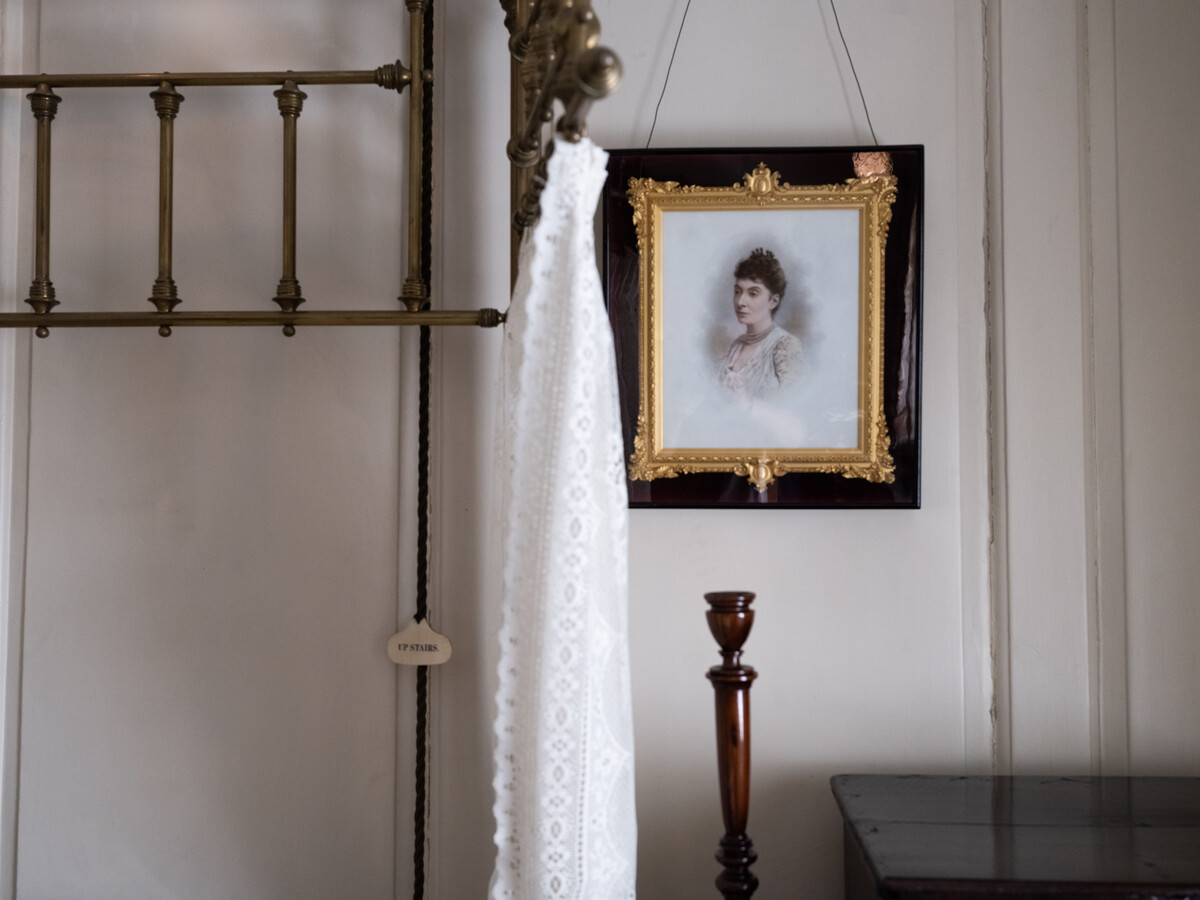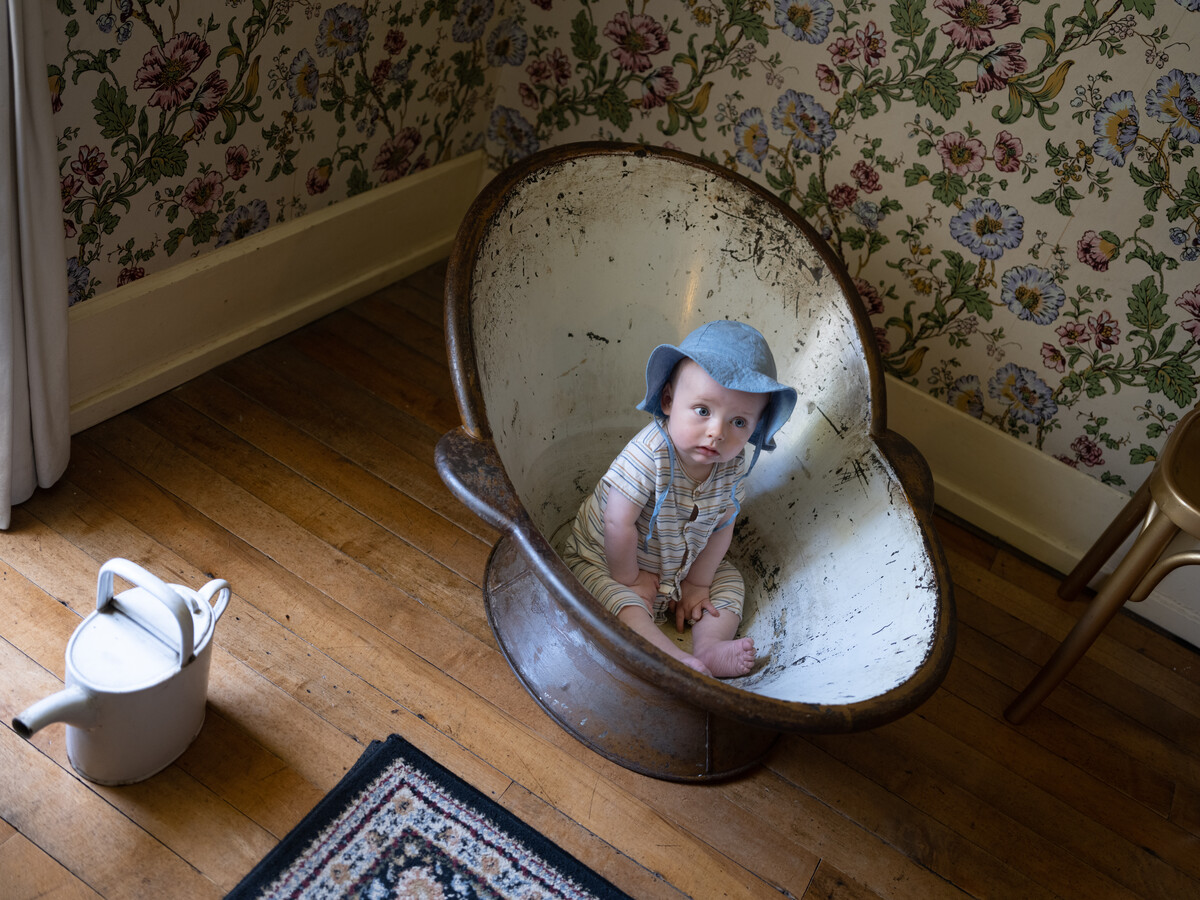
Bedrooms

The private quarters of Charles and Ellen Thomas-Stanford were designed for comfort and relaxation, with mahogany furniture, traditional decorative touches and, of course, access for staff.
Ellen Thomas-Stanford’s bedroom offered comfort and a degree of privacy, but also access to a dressing room, bathroom and, beyond that, the maid’s room. Her personal maid was responsible for laying out her clothes, helping her to dress and combing her hair. It’s thought that Ellen used her bathroom as a photographic darkroom, and preferred to take a hip bath in front of the fire in her room.

Edwardian-inspired wallpaper
It was traditional for women’s rooms to be papered rather than wood-panelled, and the walls here are covered with a reproduction of the striped wallpaper chosen by Ellen. A four-poster bed is the focal point of the room, with a silk-upholstered ottoman at the foot. Other interesting pieces include a pair of Edwardian mahogany dressing tables and a fine copy of a writing table originally made in 1790 for George, Prince of Wales, at Carlton House in London. You can see photographs of family members, including Ellen’s husband Charles and her grandson, Vere Fane Benett, who died in 1922.
Brass bedsteads were popular throughout the 19th century for hygiene reasons, and Charles Thomas Standford’s room features a replacement of the brass bed he slept in. Bell pulls close to the bed were used to summon servants, and a cord operated the brass night bolt attached to the door.
A close shave
Thomas’s room also features some lovely English mahogany furniture, as well as a rare walnut three-tier shaving stand dating from the early 19th century. With a large round mirror at the top above a trio of shelves, it has everything a gentleman might need to be shaved by either his valet or a visiting barber.